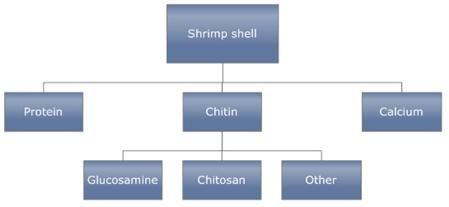HISTORY OF CHITIN
Chitin and chitosan are valuable, versatile natural materials derived from crustacean exoskeletons. The word “chitin“ is retrieved from the Greek etymology, meaning “tunic” or "envelope". Antoine Odier was the first to use the product in 1823.

Chitin was first discovered in mushrooms by professor Henri Braconnot of France in 1811. The name chitin comes in the 1830s, when the substance was isolated in insects. Chitosan was discovered in 1859 by professor C. Rouget. In the 1930s and 1940s, polymers attracts considerable attention as evidenced by about 50 patents secured during that time. Lack of adequate manufacturing facilities and cut-throat competition from synthetic polymer producers restricted commercial development. Revived interest in the 1970s encouraged the need to better utilise shellfish shells. Chitin and chitosan are used in several countries worldwide in a variety of applications, and today there are dozens of applications of chitin and its derivatives. (Global industry analysis since 2004)
Chitin
Chitin is the second-most abundant natural polymer in the world, behind only cellulose. It is also the most abundant naturally occurring polysaccharide that contains amino sugars. This abundance, combined with the specific chemistry of chitin and its derivative chitosan, make for the impressive array of potential applications.
Chitin occurs as a component of crustacean shells, insect exoskeletons, fungal cell walls and plankton. It is found in association with proteins and minerals, such as calcium carbonate. The different sources of chitin differ somewhat in their structure and percentage of chitin content.


Chitosan
Chitosan, the unique natural polymer, is commercially derived from chitin. Although typically manufactured by de-acetylating chitin through chemical processes, chitosan is also found in nature, for example as a key component in fungal cell walls.

Its chemical structure can most simply be described as a co-polymer of glucosamine and acetyl-glucosamine. As a natural cationic biopolymer in its dissolved form (pH<5,7) chitosan possesses a positive charge, giving rise to versatile uses based on its anti-microbial, gelling and film-forming properties. Chitosan consist of a family of products, differing in polymer length, chemical sequences and product purities.
